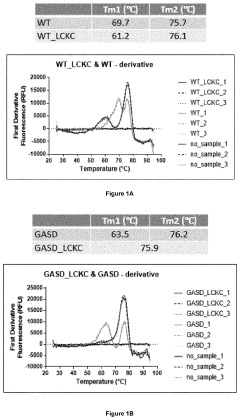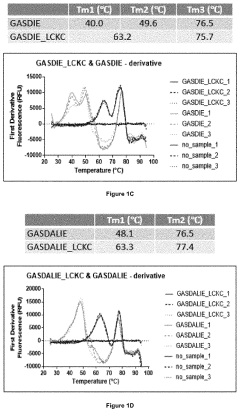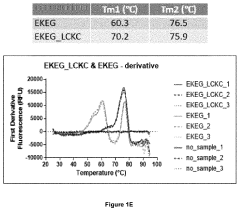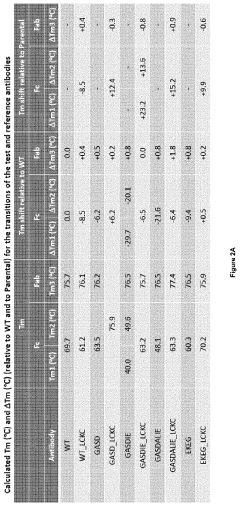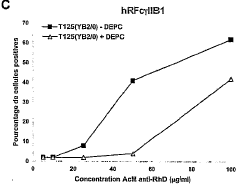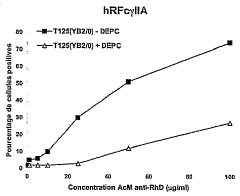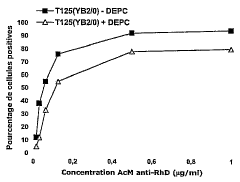How to Tune Reaction Pathways with Fluoroantimonic Acid?
JUN 23, 20259 MIN READ
Generate Your Research Report Instantly with AI Agent
Patsnap Eureka helps you evaluate technical feasibility & market potential.
Fluoroantimonic Acid Background and Objectives
Fluoroantimonic acid, a superacid composed of a mixture of hydrogen fluoride (HF) and antimony pentafluoride (SbF5), has garnered significant attention in the field of chemistry due to its exceptional acidity and unique properties. This powerful compound has been the subject of extensive research and development over the past several decades, with its potential applications spanning various industries and scientific disciplines.
The evolution of fluoroantimonic acid technology can be traced back to the early 1960s when George A. Olah and his colleagues first synthesized and characterized this superacid. Since then, researchers have made considerable progress in understanding its structure, properties, and reactivity, leading to a deeper appreciation of its potential in organic synthesis, catalysis, and materials science.
The primary objective of exploring fluoroantimonic acid in the context of tuning reaction pathways is to harness its exceptional acidity and unique chemical properties to enable novel transformations and enhance existing processes. By leveraging the superacidic nature of fluoroantimonic acid, researchers aim to activate traditionally unreactive substrates, facilitate challenging bond formations, and access previously unattainable reaction intermediates.
One of the key technological trends in this field is the development of more controlled and selective reaction conditions using fluoroantimonic acid. This includes the exploration of various reaction parameters, such as temperature, concentration, and solvent systems, to fine-tune the acid's reactivity and optimize desired reaction pathways. Additionally, researchers are investigating the use of fluoroantimonic acid in combination with other catalysts or reagents to create synergistic effects and expand its applicability.
The potential impact of fluoroantimonic acid on reaction pathway tuning extends beyond traditional organic synthesis. Its unique properties make it a promising candidate for applications in petrochemical processing, polymer synthesis, and materials science. As such, the technology goals in this area encompass not only the development of new synthetic methodologies but also the exploration of novel materials and processes enabled by fluoroantimonic acid.
Looking ahead, the field of fluoroantimonic acid research is poised for further advancements. Emerging areas of interest include the development of more environmentally friendly and safer handling protocols, the exploration of supported or immobilized forms of the superacid, and the integration of fluoroantimonic acid chemistry with other cutting-edge technologies such as flow chemistry and automated synthesis platforms.
The evolution of fluoroantimonic acid technology can be traced back to the early 1960s when George A. Olah and his colleagues first synthesized and characterized this superacid. Since then, researchers have made considerable progress in understanding its structure, properties, and reactivity, leading to a deeper appreciation of its potential in organic synthesis, catalysis, and materials science.
The primary objective of exploring fluoroantimonic acid in the context of tuning reaction pathways is to harness its exceptional acidity and unique chemical properties to enable novel transformations and enhance existing processes. By leveraging the superacidic nature of fluoroantimonic acid, researchers aim to activate traditionally unreactive substrates, facilitate challenging bond formations, and access previously unattainable reaction intermediates.
One of the key technological trends in this field is the development of more controlled and selective reaction conditions using fluoroantimonic acid. This includes the exploration of various reaction parameters, such as temperature, concentration, and solvent systems, to fine-tune the acid's reactivity and optimize desired reaction pathways. Additionally, researchers are investigating the use of fluoroantimonic acid in combination with other catalysts or reagents to create synergistic effects and expand its applicability.
The potential impact of fluoroantimonic acid on reaction pathway tuning extends beyond traditional organic synthesis. Its unique properties make it a promising candidate for applications in petrochemical processing, polymer synthesis, and materials science. As such, the technology goals in this area encompass not only the development of new synthetic methodologies but also the exploration of novel materials and processes enabled by fluoroantimonic acid.
Looking ahead, the field of fluoroantimonic acid research is poised for further advancements. Emerging areas of interest include the development of more environmentally friendly and safer handling protocols, the exploration of supported or immobilized forms of the superacid, and the integration of fluoroantimonic acid chemistry with other cutting-edge technologies such as flow chemistry and automated synthesis platforms.
Industrial Applications and Market Analysis
Fluoroantimonic acid, known as the world's strongest superacid, has garnered significant attention in various industrial applications due to its exceptional proton-donating ability and catalytic properties. The market for fluoroantimonic acid and related superacid technologies has been steadily growing, driven by increasing demand in petrochemical processing, materials science, and organic synthesis.
In the petrochemical industry, fluoroantimonic acid plays a crucial role in isomerization and alkylation processes, particularly in the production of high-octane gasoline components. The global demand for cleaner and more efficient fuels has led to a surge in the adoption of superacid-based catalysts, with fluoroantimonic acid at the forefront. This trend is expected to continue as environmental regulations become more stringent worldwide.
The materials science sector has also witnessed a growing interest in fluoroantimonic acid applications, especially in the development of advanced polymers and nanocomposites. The ability to tune reaction pathways using this superacid has opened up new possibilities for creating materials with enhanced properties, such as improved thermal stability, chemical resistance, and mechanical strength.
In organic synthesis, fluoroantimonic acid has proven invaluable for facilitating challenging transformations that are difficult or impossible to achieve with conventional acids. This has led to its increased use in the pharmaceutical and fine chemicals industries, where complex molecule synthesis is paramount. The market for specialty chemicals produced using fluoroantimonic acid-based processes is projected to expand significantly in the coming years.
The global market for superacids, including fluoroantimonic acid, is experiencing robust growth. While specific market size data for fluoroantimonic acid is limited due to its specialized nature, the overall superacid market is estimated to be growing at a compound annual growth rate (CAGR) of over 5%. This growth is primarily driven by increasing industrial applications and ongoing research into new uses for these powerful catalysts.
Geographically, North America and Europe currently dominate the market for fluoroantimonic acid and related technologies, owing to their well-established petrochemical and pharmaceutical industries. However, the Asia-Pacific region is emerging as a significant market, with rapid industrialization and increasing investments in advanced materials and chemical processing technologies.
Despite its promising market outlook, the widespread adoption of fluoroantimonic acid faces challenges related to handling and safety concerns. Its extremely corrosive nature and sensitivity to moisture require specialized equipment and expertise, which can limit its use in certain applications. As a result, there is ongoing research into developing more stable and user-friendly superacid systems that maintain the catalytic efficiency of fluoroantimonic acid while mitigating its handling risks.
In the petrochemical industry, fluoroantimonic acid plays a crucial role in isomerization and alkylation processes, particularly in the production of high-octane gasoline components. The global demand for cleaner and more efficient fuels has led to a surge in the adoption of superacid-based catalysts, with fluoroantimonic acid at the forefront. This trend is expected to continue as environmental regulations become more stringent worldwide.
The materials science sector has also witnessed a growing interest in fluoroantimonic acid applications, especially in the development of advanced polymers and nanocomposites. The ability to tune reaction pathways using this superacid has opened up new possibilities for creating materials with enhanced properties, such as improved thermal stability, chemical resistance, and mechanical strength.
In organic synthesis, fluoroantimonic acid has proven invaluable for facilitating challenging transformations that are difficult or impossible to achieve with conventional acids. This has led to its increased use in the pharmaceutical and fine chemicals industries, where complex molecule synthesis is paramount. The market for specialty chemicals produced using fluoroantimonic acid-based processes is projected to expand significantly in the coming years.
The global market for superacids, including fluoroantimonic acid, is experiencing robust growth. While specific market size data for fluoroantimonic acid is limited due to its specialized nature, the overall superacid market is estimated to be growing at a compound annual growth rate (CAGR) of over 5%. This growth is primarily driven by increasing industrial applications and ongoing research into new uses for these powerful catalysts.
Geographically, North America and Europe currently dominate the market for fluoroantimonic acid and related technologies, owing to their well-established petrochemical and pharmaceutical industries. However, the Asia-Pacific region is emerging as a significant market, with rapid industrialization and increasing investments in advanced materials and chemical processing technologies.
Despite its promising market outlook, the widespread adoption of fluoroantimonic acid faces challenges related to handling and safety concerns. Its extremely corrosive nature and sensitivity to moisture require specialized equipment and expertise, which can limit its use in certain applications. As a result, there is ongoing research into developing more stable and user-friendly superacid systems that maintain the catalytic efficiency of fluoroantimonic acid while mitigating its handling risks.
Current Challenges in Reaction Pathway Tuning
Tuning reaction pathways with fluoroantimonic acid presents several significant challenges that researchers and industry professionals are currently grappling with. One of the primary obstacles is the extreme reactivity and corrosiveness of fluoroantimonic acid, which makes it difficult to handle and control in experimental settings. This superacid's highly reactive nature can lead to unintended side reactions, complicating efforts to selectively tune specific reaction pathways.
Another major challenge lies in the precise control of reaction conditions when using fluoroantimonic acid. The acid's strength can vary depending on its composition and concentration, making it challenging to achieve consistent results across different experiments or production batches. Researchers must develop robust methodologies to maintain stable reaction environments and ensure reproducibility in their studies.
The selectivity of reactions involving fluoroantimonic acid poses another significant hurdle. While the superacid's extreme acidity can activate various reaction pathways, directing it towards the desired reaction while minimizing unwanted side products remains a complex task. This challenge is particularly pronounced in organic synthesis, where multiple functional groups may be present and susceptible to the acid's effects.
Environmental and safety concerns also present substantial challenges in the use of fluoroantimonic acid for reaction pathway tuning. The acid's corrosive nature and potential to generate toxic fumes necessitate stringent safety protocols and specialized equipment, which can limit its applicability in certain research or industrial settings. Developing safer handling methods and containment strategies is crucial for broader adoption of this powerful reagent.
Scale-up and industrial application of fluoroantimonic acid-mediated reactions face their own set of challenges. The acid's reactivity and corrosiveness make it difficult to design and construct large-scale reaction vessels and processing equipment that can withstand its effects over extended periods. This limitation hinders the translation of laboratory-scale successes to industrial-scale processes.
Furthermore, the mechanistic understanding of reactions involving fluoroantimonic acid remains incomplete in many cases. The extreme acidity regime in which these reactions occur can lead to unique reaction intermediates and pathways that are not fully elucidated. This knowledge gap hampers efforts to rationally design and optimize reaction conditions for specific transformations.
Lastly, the development of computational models and predictive tools for fluoroantimonic acid-mediated reactions lags behind those available for more conventional acid catalysts. The unique properties of this superacid challenge existing theoretical frameworks, necessitating new approaches to accurately model and predict reaction outcomes in these extreme acidic environments.
Another major challenge lies in the precise control of reaction conditions when using fluoroantimonic acid. The acid's strength can vary depending on its composition and concentration, making it challenging to achieve consistent results across different experiments or production batches. Researchers must develop robust methodologies to maintain stable reaction environments and ensure reproducibility in their studies.
The selectivity of reactions involving fluoroantimonic acid poses another significant hurdle. While the superacid's extreme acidity can activate various reaction pathways, directing it towards the desired reaction while minimizing unwanted side products remains a complex task. This challenge is particularly pronounced in organic synthesis, where multiple functional groups may be present and susceptible to the acid's effects.
Environmental and safety concerns also present substantial challenges in the use of fluoroantimonic acid for reaction pathway tuning. The acid's corrosive nature and potential to generate toxic fumes necessitate stringent safety protocols and specialized equipment, which can limit its applicability in certain research or industrial settings. Developing safer handling methods and containment strategies is crucial for broader adoption of this powerful reagent.
Scale-up and industrial application of fluoroantimonic acid-mediated reactions face their own set of challenges. The acid's reactivity and corrosiveness make it difficult to design and construct large-scale reaction vessels and processing equipment that can withstand its effects over extended periods. This limitation hinders the translation of laboratory-scale successes to industrial-scale processes.
Furthermore, the mechanistic understanding of reactions involving fluoroantimonic acid remains incomplete in many cases. The extreme acidity regime in which these reactions occur can lead to unique reaction intermediates and pathways that are not fully elucidated. This knowledge gap hampers efforts to rationally design and optimize reaction conditions for specific transformations.
Lastly, the development of computational models and predictive tools for fluoroantimonic acid-mediated reactions lags behind those available for more conventional acid catalysts. The unique properties of this superacid challenge existing theoretical frameworks, necessitating new approaches to accurately model and predict reaction outcomes in these extreme acidic environments.
Existing Methodologies for Reaction Pathway Control
01 Catalytic applications of fluoroantimonic acid
Fluoroantimonic acid is utilized as a powerful catalyst in various chemical reactions due to its extreme acidity. It can catalyze alkylation, isomerization, and cracking reactions in hydrocarbon processing. The acid's strong protonating ability enables it to activate substrates that are typically unreactive, leading to novel reaction pathways and improved yields in organic synthesis.- Reaction mechanisms of fluoroantimonic acid: Fluoroantimonic acid, known as the strongest superacid, exhibits unique reaction pathways due to its extreme acidity. Its reaction mechanisms often involve protonation of substrates, leading to the formation of highly reactive carbocations. These carbocations can then undergo various transformations, including rearrangements, eliminations, and additions. The acid's ability to protonate even weak bases makes it a powerful catalyst in organic synthesis.
- Applications in hydrocarbon processing: Fluoroantimonic acid finds significant applications in hydrocarbon processing, particularly in the petrochemical industry. It catalyzes isomerization, alkylation, and cracking reactions of hydrocarbons. The acid's extreme acidity allows for efficient conversion of low-value hydrocarbons into higher-value products. Its use in these processes often results in improved yields and selectivity compared to conventional acid catalysts.
- Synthesis and characterization methods: The synthesis of fluoroantimonic acid typically involves the reaction of hydrogen fluoride with antimony pentafluoride. Characterization of the acid and its reactions often requires specialized techniques due to its highly corrosive nature. Advanced spectroscopic methods, such as NMR and mass spectrometry, are employed to study its structure and reaction intermediates. Computational chemistry also plays a crucial role in understanding its behavior at the molecular level.
- Safety and handling considerations: Due to its extreme reactivity and corrosiveness, handling fluoroantimonic acid requires stringent safety measures. Specialized equipment, such as fluoropolymer-lined reactors and storage containers, is necessary to prevent corrosion and potential accidents. Personal protective equipment and proper ventilation are crucial when working with this superacid. Neutralization and disposal procedures must be carefully followed to ensure environmental and personnel safety.
- Novel applications and research directions: Recent research has explored new applications of fluoroantimonic acid beyond traditional organic synthesis and petrochemical processing. These include its potential use in advanced materials synthesis, such as the production of novel polymers and nanomaterials. Some studies have investigated its role in developing new energy storage materials and catalysts for challenging chemical transformations. The unique properties of fluoroantimonic acid continue to inspire research into unexplored areas of chemistry and materials science.
02 Reaction mechanisms in superacidic media
The unique properties of fluoroantimonic acid as a superacid create distinct reaction mechanisms. In this highly acidic environment, carbocations are readily formed, leading to rearrangements and unexpected product distributions. The acid can also promote electron transfer processes and stabilize reactive intermediates, allowing for the exploration of new reaction pathways not accessible under conventional conditions.Expand Specific Solutions03 Materials synthesis using fluoroantimonic acid
Fluoroantimonic acid plays a crucial role in the synthesis of advanced materials. It can be used to prepare novel fluorinated compounds, functionalized polymers, and nanostructured materials. The acid's ability to dissolve typically inert substances allows for unique synthetic routes in materials science, particularly in the development of high-performance materials for various applications.Expand Specific Solutions04 Safety and handling considerations
Due to its extreme reactivity, the use of fluoroantimonic acid requires stringent safety protocols. Specialized equipment and handling techniques are necessary to prevent exposure and contain potential reactions. Neutralization methods and emergency procedures must be in place when working with this superacid. Understanding its reactivity with various materials is crucial for safe experimental design and execution.Expand Specific Solutions05 Analytical applications and detection methods
Fluoroantimonic acid finds use in analytical chemistry for the detection and quantification of various compounds. Its strong protonating ability can be exploited in mass spectrometry and spectroscopic techniques. The acid can also be used to develop novel sensors and analytical methods for challenging analytes, particularly in environmental and industrial monitoring applications.Expand Specific Solutions
Key Players in Superacid Research and Industry
The field of tuning reaction pathways with fluoroantimonic acid is in its early development stage, with a growing market driven by the demand for efficient chemical processes. The technology's maturity is still evolving, as evidenced by ongoing research at institutions like the University of Manitoba and Eberhard Karls Universität Tübingen. Industry leaders such as Air Products & Chemicals, Inc. and Mitsubishi Gas Chemical Co., Inc. are actively exploring applications, while specialized firms like Cf Plus Chemicals S R O are focusing on niche developments. The competitive landscape is diverse, with pharmaceutical companies like Chugai Pharmaceutical Co., Ltd. and MacroGenics, Inc. investigating potential applications in drug synthesis, indicating a broad interest across multiple sectors.
Air Products & Chemicals, Inc.
Technical Solution: Air Products & Chemicals has developed a proprietary process for the production and handling of fluoroantimonic acid (HSbF6). Their method involves the controlled reaction of hydrogen fluoride with antimony pentafluoride under anhydrous conditions. The company has engineered specialized corrosion-resistant equipment and safety protocols to manage this superacid. They utilize fluoroantimonic acid as a powerful catalyst in various organic synthesis reactions, particularly in the petrochemical industry for isomerization and alkylation processes.
Strengths: Expertise in handling highly corrosive materials, established safety protocols, and industrial-scale production capabilities. Weaknesses: High production costs and limited applications due to the extreme reactivity of fluoroantimonic acid.
Mitsubishi Gas Chemical Co., Inc.
Technical Solution: Mitsubishi Gas Chemical has developed a novel approach to using fluoroantimonic acid in the synthesis of high-performance polymers. Their technique involves using the superacid as a catalyst in controlled polymerization reactions to produce fluoropolymers with exceptional chemical resistance and thermal stability. The company has also invested in developing containment systems that allow for the safe handling and storage of fluoroantimonic acid in industrial settings, enabling its use in continuous flow chemistry applications.
Strengths: Innovative applications in polymer chemistry, advanced containment technology. Weaknesses: Limited to specialized applications, high costs associated with safety measures.
Innovations in Fluoroantimonic Acid Catalysis
Engineered fc
PatentInactiveUS20210388083A1
Innovation
- The development of antigen-binding molecules with specific Fc region substitutions, including combinations like L242C and K334C, which create intramolecular disulphide bridges, enhance affinity for activatory Fcγ receptors and FcRn receptors, while maintaining high stability and selectivity.
Method for preparing antibodies selective for activating fc receptors
PatentWO2007080277A1
Innovation
- Developing a method to modify the Fc region of antibodies by replacing specific residues (His 310 and His 435) with lysine, alanine, glycine, valine, leucine, isoleucine, proline, methionine, tryptophan, phenylalanine, serine, or threonine, resulting in reduced binding to inhibitory FcR receptors while maintaining or enhancing binding to activating FcR receptors, thereby optimizing ADCC mechanisms and antigen presentation.
Safety and Handling Protocols for Superacids
Handling fluoroantimonic acid and other superacids requires stringent safety protocols due to their extreme corrosiveness and reactivity. Personal protective equipment (PPE) is essential, including chemical-resistant suits, gloves, and face shields. All work must be conducted in a fume hood with proper ventilation to prevent exposure to toxic fumes. Specialized storage containers made of fluoropolymers like PTFE are necessary, as these acids can react with glass and most metals.
Emergency response procedures must be in place, including readily accessible eyewash stations and safety showers. Neutralization agents like sodium bicarbonate should be kept on hand for spill control. Proper disposal methods are crucial, typically involving careful dilution and neutralization before disposal as hazardous waste.
Training is paramount for anyone working with superacids. This includes understanding the chemical properties, recognizing potential hazards, and mastering proper handling techniques. Regular safety drills and equipment checks should be conducted to ensure preparedness for potential accidents.
Environmental controls are also critical. Temperature regulation is essential as many superacid reactions are highly exothermic. Moisture control is equally important, as these acids react violently with water. Inert atmosphere systems using dry nitrogen or argon may be necessary for certain procedures.
Documentation and record-keeping are vital components of safety protocols. Detailed logs of acid usage, storage conditions, and any incidents should be maintained. Standard operating procedures (SOPs) must be developed and regularly updated to reflect best practices and any new safety information.
Risk assessment should be an ongoing process. This includes evaluating the necessity of using superacids, exploring less hazardous alternatives where possible, and continuously refining safety measures based on new research and incident reports from the broader scientific community.
Collaboration with institutional safety officers and regulatory compliance teams is essential to ensure all local, national, and international safety standards are met. This may include obtaining special permits, implementing specific waste management protocols, and participating in regular safety audits.
Emergency response procedures must be in place, including readily accessible eyewash stations and safety showers. Neutralization agents like sodium bicarbonate should be kept on hand for spill control. Proper disposal methods are crucial, typically involving careful dilution and neutralization before disposal as hazardous waste.
Training is paramount for anyone working with superacids. This includes understanding the chemical properties, recognizing potential hazards, and mastering proper handling techniques. Regular safety drills and equipment checks should be conducted to ensure preparedness for potential accidents.
Environmental controls are also critical. Temperature regulation is essential as many superacid reactions are highly exothermic. Moisture control is equally important, as these acids react violently with water. Inert atmosphere systems using dry nitrogen or argon may be necessary for certain procedures.
Documentation and record-keeping are vital components of safety protocols. Detailed logs of acid usage, storage conditions, and any incidents should be maintained. Standard operating procedures (SOPs) must be developed and regularly updated to reflect best practices and any new safety information.
Risk assessment should be an ongoing process. This includes evaluating the necessity of using superacids, exploring less hazardous alternatives where possible, and continuously refining safety measures based on new research and incident reports from the broader scientific community.
Collaboration with institutional safety officers and regulatory compliance teams is essential to ensure all local, national, and international safety standards are met. This may include obtaining special permits, implementing specific waste management protocols, and participating in regular safety audits.
Environmental Impact and Sustainability Considerations
The use of fluoroantimonic acid in tuning reaction pathways raises significant environmental and sustainability concerns that must be carefully considered. As one of the strongest known superacids, fluoroantimonic acid poses severe risks to ecosystems and human health if not properly managed. Its highly corrosive and reactive nature can lead to widespread environmental contamination if released, potentially causing long-term damage to soil, water sources, and air quality.
The production and handling of fluoroantimonic acid require extensive safety measures and specialized equipment, which can be energy-intensive and resource-demanding. This raises questions about the overall sustainability of processes involving this superacid, particularly when considering the principles of green chemistry and the drive towards more environmentally benign chemical processes.
Waste management is a critical issue when using fluoroantimonic acid. The disposal of reaction by-products and neutralized acid must be conducted with extreme caution to prevent environmental contamination. Traditional waste treatment methods may be insufficient, necessitating the development of specialized disposal techniques that can further strain resources and energy consumption.
The potential for accidental release during transportation or handling poses a significant risk to both human populations and ecosystems. Emergency response plans and containment strategies must be robust and well-implemented, adding another layer of complexity and resource allocation to the use of this superacid in industrial processes.
From a sustainability perspective, the use of fluoroantimonic acid may conflict with global efforts to reduce the environmental footprint of chemical processes. As industries and research institutions increasingly prioritize green chemistry principles, the long-term viability of processes heavily reliant on such aggressive reagents may be called into question.
However, it is important to note that the precise tuning of reaction pathways enabled by fluoroantimonic acid could potentially lead to more efficient processes in certain applications. If these efficiencies result in significant reductions in energy consumption or waste production in other areas of the chemical process, there may be a net positive environmental impact. This highlights the need for comprehensive life cycle assessments to fully understand the environmental implications of using fluoroantimonic acid in specific applications.
Research into alternative, less hazardous substances that can achieve similar reaction control is crucial for improving the sustainability profile of processes currently reliant on fluoroantimonic acid. Developing safer, more environmentally friendly catalysts and reaction conditions that can match the performance of this superacid should be a priority for the chemical industry and academic researchers alike.
The production and handling of fluoroantimonic acid require extensive safety measures and specialized equipment, which can be energy-intensive and resource-demanding. This raises questions about the overall sustainability of processes involving this superacid, particularly when considering the principles of green chemistry and the drive towards more environmentally benign chemical processes.
Waste management is a critical issue when using fluoroantimonic acid. The disposal of reaction by-products and neutralized acid must be conducted with extreme caution to prevent environmental contamination. Traditional waste treatment methods may be insufficient, necessitating the development of specialized disposal techniques that can further strain resources and energy consumption.
The potential for accidental release during transportation or handling poses a significant risk to both human populations and ecosystems. Emergency response plans and containment strategies must be robust and well-implemented, adding another layer of complexity and resource allocation to the use of this superacid in industrial processes.
From a sustainability perspective, the use of fluoroantimonic acid may conflict with global efforts to reduce the environmental footprint of chemical processes. As industries and research institutions increasingly prioritize green chemistry principles, the long-term viability of processes heavily reliant on such aggressive reagents may be called into question.
However, it is important to note that the precise tuning of reaction pathways enabled by fluoroantimonic acid could potentially lead to more efficient processes in certain applications. If these efficiencies result in significant reductions in energy consumption or waste production in other areas of the chemical process, there may be a net positive environmental impact. This highlights the need for comprehensive life cycle assessments to fully understand the environmental implications of using fluoroantimonic acid in specific applications.
Research into alternative, less hazardous substances that can achieve similar reaction control is crucial for improving the sustainability profile of processes currently reliant on fluoroantimonic acid. Developing safer, more environmentally friendly catalysts and reaction conditions that can match the performance of this superacid should be a priority for the chemical industry and academic researchers alike.
Unlock deeper insights with Patsnap Eureka Quick Research — get a full tech report to explore trends and direct your research. Try now!
Generate Your Research Report Instantly with AI Agent
Supercharge your innovation with Patsnap Eureka AI Agent Platform!
